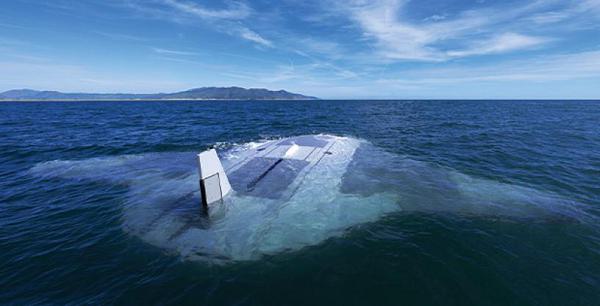
Washington, D.C. (January 30, 2025): The U.S. Navy has announced plans to establish a network of underwater drones which is making America’s adversaries very nervous. In this photo courtesy of Northrop Grumman, a Manta Ray prototype submerges during initial ocean testing. This ray-shaped uncrewed drone is designed to operate independently with limited human intervention for long periods of time. The vessel is capable of conducting surveillance or it can carry a variety of missiles for offensive operations.
The Navy envisions a network of permanently submerged drone ships to continuously patrol the depths. When not on patrol, the Manta can anchor itself to the sea floor and “hibernate” at low power. The craft uses the ocean’s own energy to propel itself, or glide, through the water allowing it to roam the seas indefinitely. The Manta uses the ocean’s thermal gradient, or the difference in temperature between warm water at the surface and the cold water below, to generate electricity. In addition to harvesting the power of the ocean, the Manta uses variable buoyancy to go up or down and small propellors to make turns. If under attack, the Manta can escape by descending to depths humans cannot.
The ship reportedly can travel over ten thousand miles and carry up to a ten-ton payload. For secure communications, the Manta will release “data bubbles.” According to Northrop, the bubbles and their data float to the surface and begin using their RF satellite antenna to transmit to shore, a nearby ship, or to a satellite. This cutting-edge technology makes interception by the enemy extremely difficult.
Perhaps the greatest advantage of the Manta is its portability. While larger submarines are heavy and difficult to launch, the Manta can be broken down into modular sections and transported anywhere in the world and quickly reassembled. According to Northop Gruman, the Manta Ray’s uncrewed capability will “keep humans out of harm’s way during long missions in potentially dangerous environments.”


